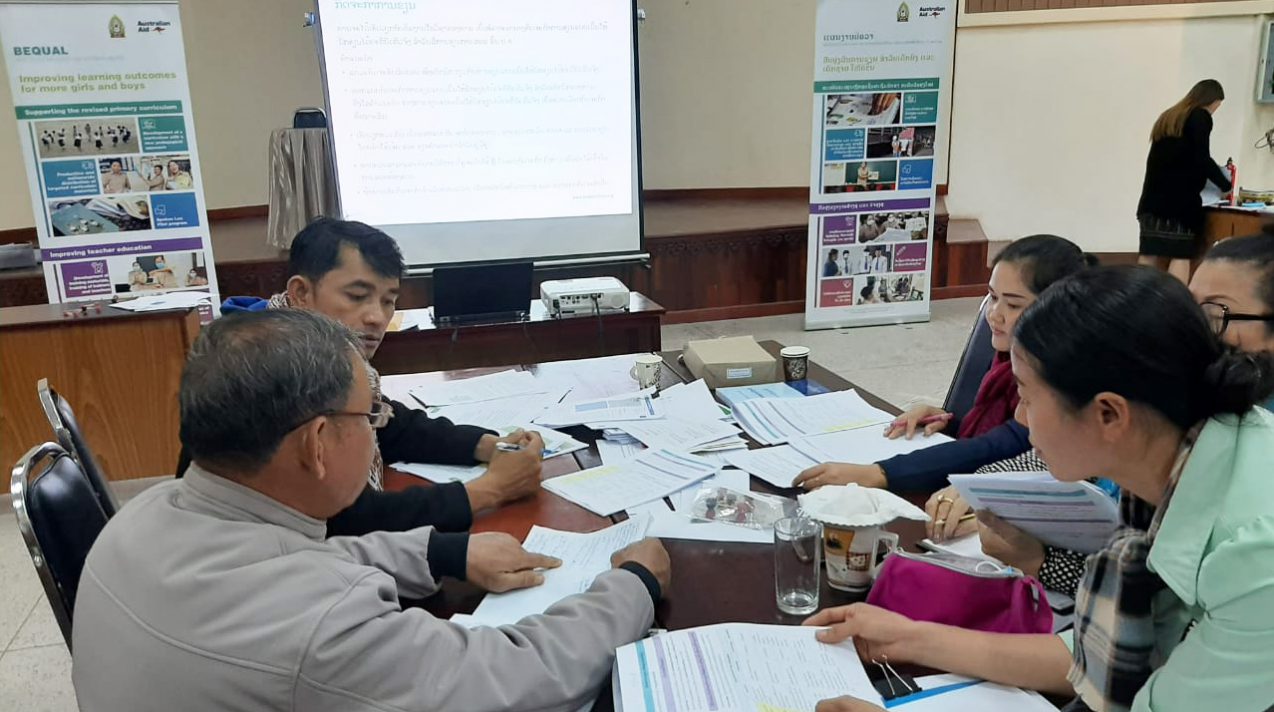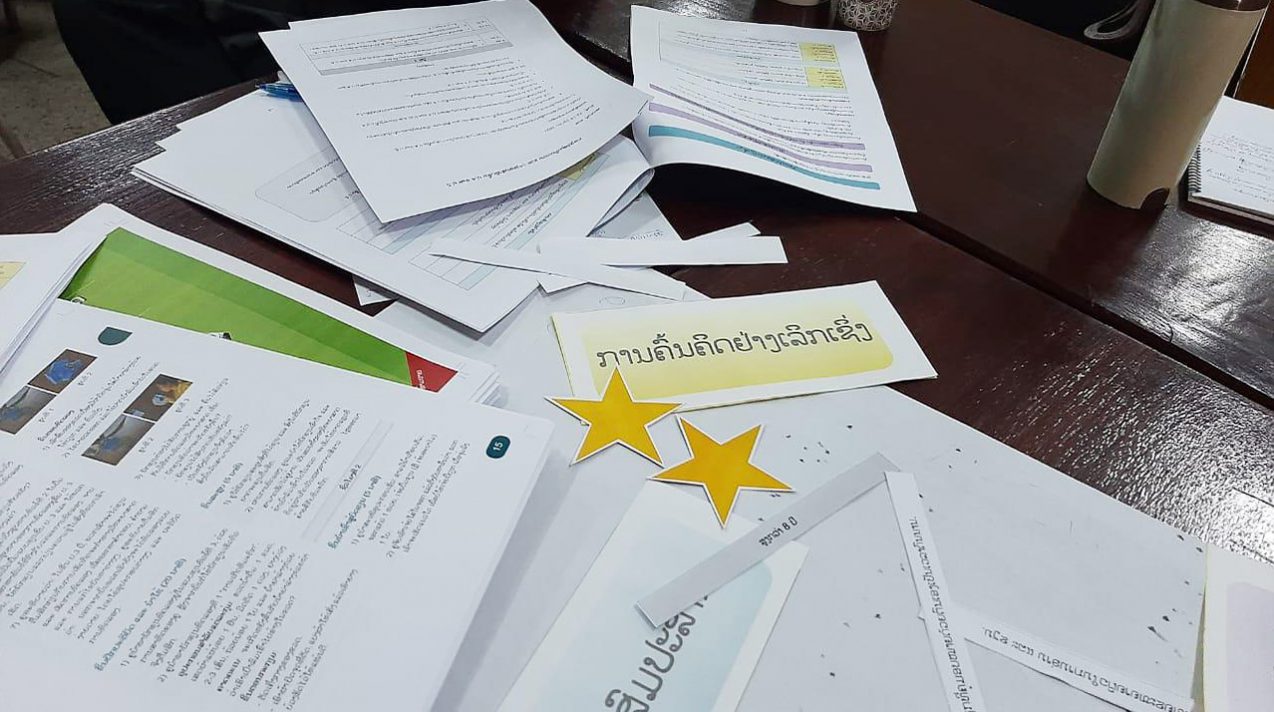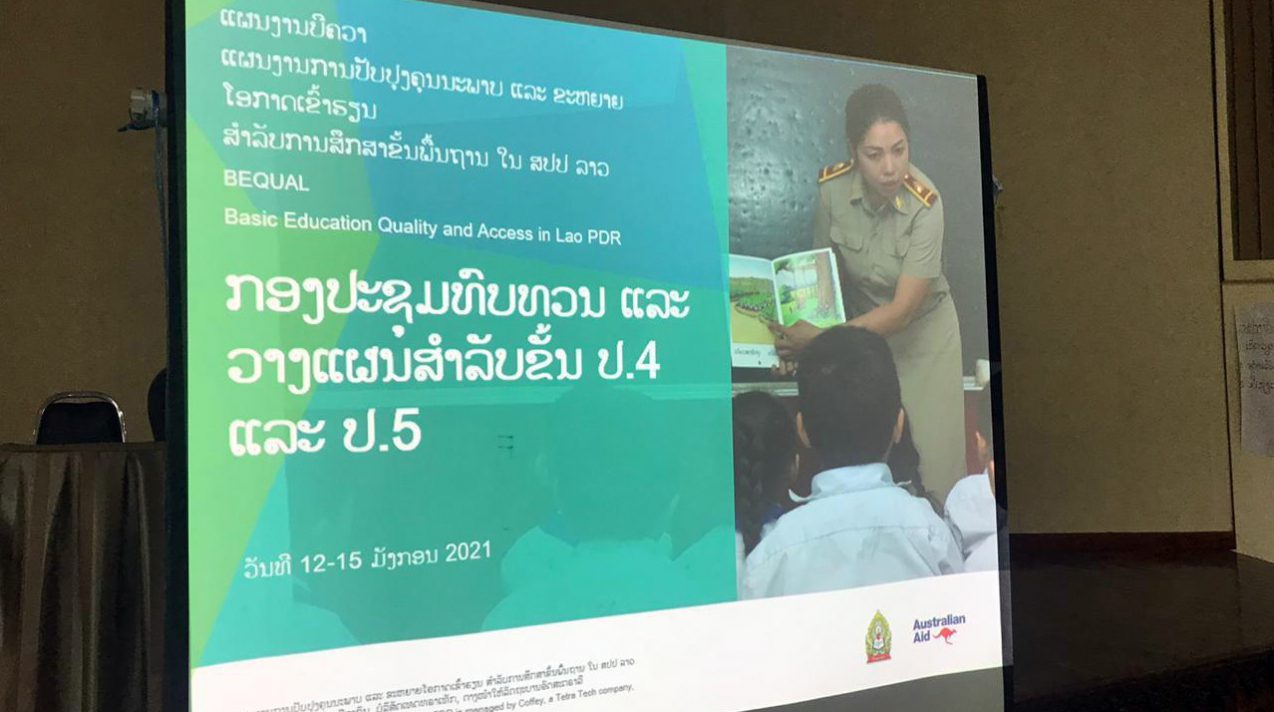Curriculum writers received guidance on how to promote active learning and integrate the multigrade strategy in the development of the new teaching and learning materials
The Ministry of Education and Sports, with support from Australia through the Basic Education Quality and Access in Lao PDR program (BEQUAL), has been developing a new improved primary curriculum since 2015. The development, production and nationwide distribution of new teaching and learning materials for a new grade every year is a huge task which takes between 18 – 24 months depending on the subject and necessitates a lot of planning and coordination. Curriculum writers are now making the final modifications to the new Grade 3 materials that will be distributed for the start of the next school year. And it is already time to start work on the next grades.
On 12th January, Dr Onekeo Nouannavong, Director General of the Research Institute for Educational Sciences (RIES) opened a four-day “Reflection and Planning workshop for Grade 4 and 5”. This workshop marks the start of the development of the new improved Grade 4 and 5 teaching and learning materials. 35 Grade 4 and 5 curriculum writers from eight subjects (Lao Language, Science and Environment, English, Moral Education, Arts and Handicraft, Music, Physical Education and Social Studies) participated daily in various group activities.
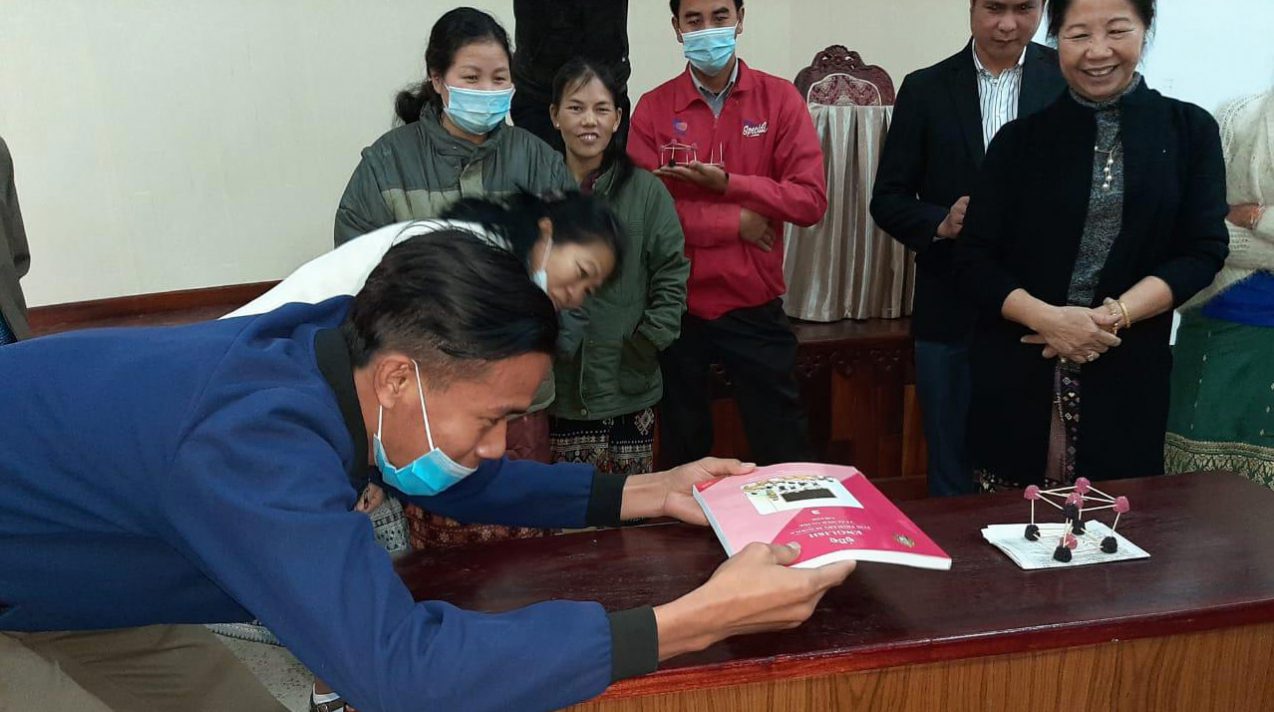
During his opening remarks, Dr Onekeo encouraged “curriculum writers to work hard to ensure the development of learners’ skills and knowledge.” He also advised them “to apply the techniques and concepts of active learning that will be explained and demonstrated during the workshop”.
Indeed, the main difference in the new curriculum is a student-centred pedagogical approach with a focus on active learning. It emphasizes the role students’ own thinking plays in learning successfully. The students will learn by doing activities, reflecting on their new knowledge and applying their new skills inside and outside the classroom.
A large and growing body of research shows that active learning is much more effective than passive learning approaches. It improves students’ learning outcomes and increases students’ motivation to learn. For this reason, RIES is pursuing an active learning approach in the development of the new teaching and learning materials.
During the workshop the participants received practical guidance on how to integrate more complex active learning techniques while writing the future Grade 4 and 5 lessons; they reviewed current active learning techniques in the Grade 3 materials and developed action points for how to progress to more complex active learning techniques in Grades 4 and 5. They also explored the new MoES multigrade teaching strategy and learned ways to support the strategy when writing materials. They undertook initial planning and mapping activities for both grades.
In the coming months, the writers will work by subject teams and a first draft of Grade 4 materials is expected to be ready by the middle of this year.
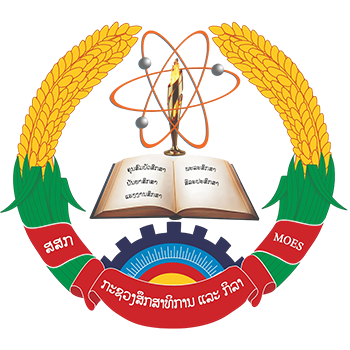


 ພາສາລາວ
ພາສາລາວ
